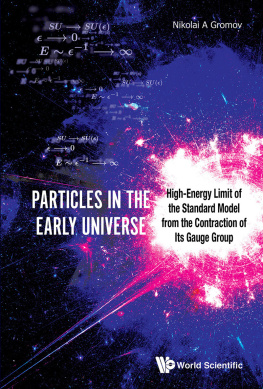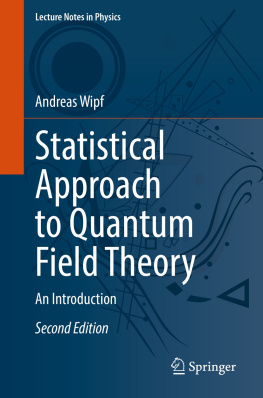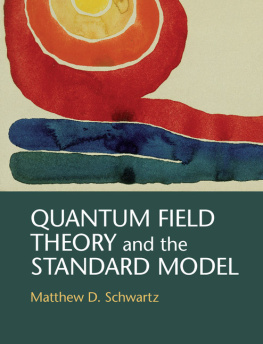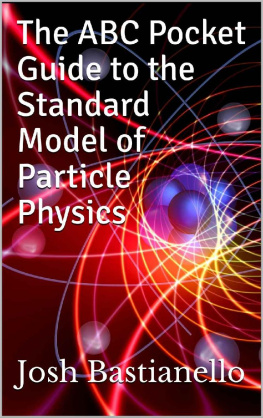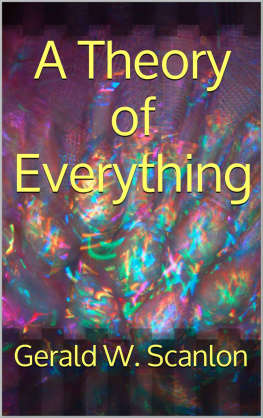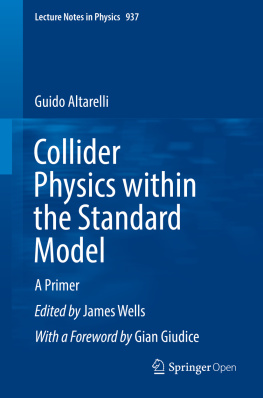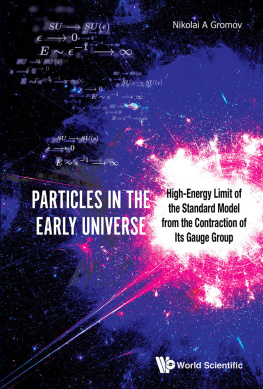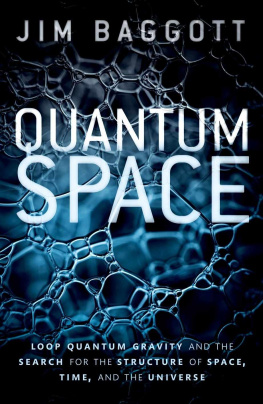Bibliography
Abellanas, L. and Martinez Alonso L. (1975). A general setting for Casimir invariants, J. Math. Phys. 16, 8, pp. 15801584.
Bacry, H. and Levy-Leblond, J.-M. (1968). Possible kinematics, J. Math. Phys. 9, 10, pp. 16051614.
Bacry, H. and Nuyts J. (1986). Classification of ten-dimensional kinematical groups with space isotropy, J. Math. Phys. 27, 10, pp. 24552457.
Ballesteros, A., Gromov, N. A., Herranz, F. J., del Olmo, M. A. and Santander, M. (1995). Lie bialgebra contractions and quantum deformations of quasi-orthogonal algebras, J. Math. Phys. 36, pp. 59165936.
Bargmann, V. (1954). On unitary ray representations of continuous groups, Ann. Math. 59, 1, pp. 146.
Barut, A. O. and Raczka, R. (1977). Theory of Group Representations and Applications (PWNPolish Scientific Publishers, Warszawa).
Bateman, H. and Erdelyi, A. (1953). Higher Transcendental Functions (Mc Graw-Hill, New York, Toronto, London).
Beresin, A. V., Kurochkin, Yu. A. and Tolkachev, E. A. (1989). Quaternions in Relativistic Physics (Nauka i tehnika, Minsk) (in Russian).
Beresin, F. A. (1966). The Method of Second Quantization, Monographs and Textbooks in Pure and Applied Physics, Vol. 24 (Academic Press, New York, London).
Beresin, F. A. (1987). Introduction to Superanalysis (Springer, Berlin, Heidelberg, New York).
Biedenharn, L. C. and Louck, J. (1981). Angular Momentum in Quantum Physics (Addison-Wesley, London).
Blokh, A. Sh. (1982). Numerical Systems (Vyssheishaya shkola, Minsk) (in Russian).
Bourbaki, N. (2007). Varietes Differentielles et Analytiques: Fascicule de Resultats (Springer, Berlin, Heidelberg, New York).
Celeghini, E. and Tarlini, M. (1981). Contractions of group representations. I, Nuovo CimentoB61, 2, pp. 265277.
Celeghini, E. and Tarlini, M. (1981). Contractions of group representations. II, Nuovo CimentoB65, 1, pp. 172180.
Celeghini, E. and Tarlini M. (1982). Contractions of group representations. III, Nuovo CimentoB68, 1, pp. 133141.
Celeghini, E., Giachetti, R., Sorace, E. and Tarlini M. (1990). Three-dimensional quantum groups from contractions of SUq(2), J. Math. Phys. 31, pp. 25482551.
Celeghini, E., Giachetti, R., Kulish, P. P., Sorace, E. and Tarlini M. (1991). Hopf superalgebra contractions and R-matrix for fermions, J. Phys. A: Math. Gen. 24, 24, pp. 56755682.
Celeghini, E., Giachetti, R., Sorace, E. and Tarlini M. (1991). The three-dimensional Euclidean quantum group E(3)q and its R-matrix, J. Math. Phys. 32, 5, pp. 11591165.
Celeghini, E., Giachetti, R., Sorace, E. and Tarlini M. (1991). The quantum Heisenberg qroup H(1)q, J. Math. Phys. 32, 5, pp. 11551158.
Celeghini, E., Giachetti, R., Sorace, E. and Tarlini M. (1992). Contractions of quantum groups, in Quantum Groups (Springer, Berlin), pp. 21244. (Lecture Notes in Mathematics, 1510).
Chaichian, M., Demichev, A. P. and Nelipa, N. F. (1983). The Casimir operators of inhomogeneous groups, Commun. Math. Phys. 90, pp. 353372.
Chakrabarti, A. (1968). Class of representations of the IU(n) and IO(n) algebras and respective deformations to U(n, 1), O(n, 1), J. Math. Phys. 9, 12, pp. 20872100.
Clifford, W. K. (1873). Preliminary sketch of biquaternions, Proc. London Math. Soc. 4, pp. 381395.
Dattoli, G., Richetta, M. and Torre, A. (1988). Evolution of SU(2) and SU(1, 1) states: A further mathematical analysis, J. Math. Phys. 29, pp. 25862592.
de Prunele, E. (1988). SU(1, 1), its connections with SU(2), and the vector model, J. Math. Phys. 29, pp. 25232528.
Derom, J.-R. and Dubois, J.-G. (1972). Hookes symmetries and nonrelativistic cosmological kinematics, Nuovo Cimento9B, pp. 351376.
Dodonov, V. V. and Manko, V. I. (1987). P. N. Lebedev Physical Institute Proceedings183, pp. 182288 (in Russian).
Dubois, J.-G. (1973). Hookes symmetries and nonrelativistic cosmological kinematics. II. Irreducible projective representations, Nuovo Cimento15B, 1, pp. 124.
Duplii, S. A. (1988). Nilpotent mechanics and supersymmetry, Probl. Nucl. Phys. Cosmic Rays30, pp. 4148 (in Russian).
Emelyanov, V. M. (2007). Standard Model and its Expansion (Fizmatlit, Moscow) (in Russian).
Fedorov, F. I. (1979). Lorentz Group (Nauka, Moscow) (in Russian).
Fernandez Sanjuan, M. A. (1984). Group contraction and nine CayleyKlein geometries, Int. J. Theor. Phys. 23, 1, pp. 114.
Gelfand, I. M. (1950). Centre of infinitesimal group ring, Math. Collection26(28), 1, pp. 103112 (in Russian).
Gelfand, I. M. and Graev, M. I. (1965). Finite dimensional irreducible representations of unitary and general linear groups and connected special functions, Proc. AS USSR. Math. Ser. 29, pp. 13291356 (in Russian).
Gelfand, I. M. and Graev, M. I. (1967). Irreducible representations of Lie algebra of U(p, q) group, in Higher Energy Physics and Theory of Elementary Particles (Kiev, Naukova dumka), pp. 216226. (in Russian).
Gelfand, I. M., Minlos, R. A. and Shapiro, Z. Ya. (1963). Representations of the Rotation and Lorentz Groups and their Applications (Pergamon Press).
Gelfand, I. M. and Tsetlin, M. L. (1950). Finite-dimensional representations of unimodular matrix group, Soviet Math. Dokl. 71, 5, pp. 825828 (in Russian).
Gershun, V. D. and Tkach, V. I. (1984). Para-Grassmann variables and description of massive particles with unit spin, Ukrainian Phys. J. 29, 11, pp. 16201627 (in Russian).
Gershun, V. D. and Tkach, V. I. (1985). Grassmann and para-Grassmann variables and dynamics of massless particles with unit spin, Probl. Nucl. Phys. Cosmic Rays23, pp. 4260 (in Russian).
Glauber, R. J. (1963). Coherent and incoherent states of the radiation field, Phys. Rev. 131, pp. 27662788.
Gorbunov, D. S. and Rubakov, V. A. (2011). Introduction to the Theory of the Early Universe: Hot Big Bang Theory (World Scientific, Singapore, 2011).
Gromov, N. A. (1981). Casimir operators of groups of motions of space of constant curvature, Teor. Mat. Fiz. 49, 2, pp. 210218 (in Russian).
Gromov, N. A. (1984). Analogs of F. I. Fedorovs parametrization of groups SO3(j), SO4(j) in fiber spaces, Vesci AS BSSR. Ser. fiz.-math. 2, pp. 108114 (in Russian).
Gromov, N. A. (1984) Special Unitary Groups in Fiber Spaces (Syktyvkar) (in Russian).
Gromov, N. A. (1990). Contractions and Analytical Continuations of Classical Groups. Unified Approach (Komi Science Centre RAS, Syktyvkar) (in Russian).
Gromov, N. A. (1990). Transitions: contractions and analytical continuations of the CayleyKlein groups, Int. J. Theor. Phys. 29, 6, pp. 607620.
Gromov, N. A. and Manko, V. I. (1990). The JordanSchwinger representations of CayleyKlein groups. J. Math. Phys. 31, 5, I. The orthogonal groups, pp. 10471053, II. The unitary groups, pp. 10541059; III. The symplectic groups, pp. 10601064.
Gromov, N. A. and Manko, V. I. (1991). Group quantum systems in correlated coherent states representations, P. N. Lebedev Physical Institute Proceedings200, pp. 355 (in Russian).
Gromov, N. A. (1991). The GelfandTsetlin representations of the unitary CayleyKlein algebras,

